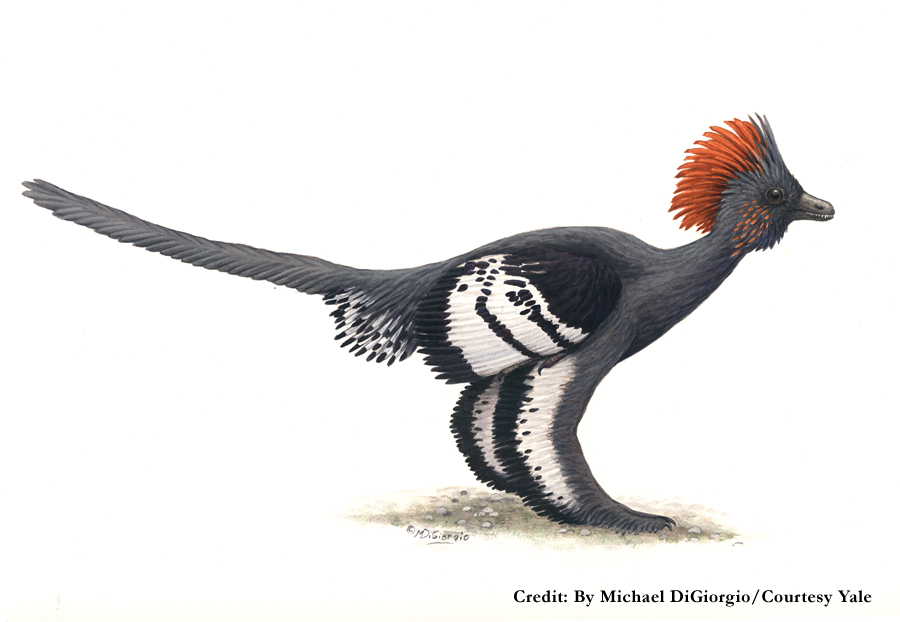By comparing tiny pigment particles between modern-day birds and fossils, researchers have rediscovered the colours of a dinosaur that existed 150 million years ago. And they weren't just ginger.
 Reporting in the journal Science, the latest team, led by Yale University, follow beautifully from last week's news of the flame-haired, feathered Sinosauropteryx.
Reporting in the journal Science, the latest team, led by Yale University, follow beautifully from last week's news of the flame-haired, feathered Sinosauropteryx.
This latest study analysed colour-making structures called melanosomes from the whole fossil of a single dinosaur and managed to map out a great deal of the pattern of its markings.
The dinosaur in question was Anchiornis huxleyi which had wings and a Mohawk-like crest on its head. From their reconstruction the palaeontologists think it would have had a grey body, its crest would have been reddish-brown, it had facial speckles (or freckles) and white feathers on its wings and legs, with black stripes.
They way they did this was rather ingenious. Jakob Vinther (also from Yale) was studying the ink sac of an ancient squid and realized that microscopic, grainy features within the fossil were actually melanosomes - and these contain melanin, which provides pigment in animals. But previously some scientists had thought these granules were just some rather unexciting ancient bacteria. Not anymore.
The team looked at 29 feather samples from the fossil and they measured and mapped out these melanosomes. They then compared these with the types of melanosomes known to create particular colours in living birds, using data compiled by a group at the University of Akron. The analysis allowed them to say with about 90 percent certainty that these are the colours of individual feathers.
The finding hints that, as these dinosaurs were flightless, colourful feathers may have arisen for aesthetics and attracting mates.
- Previous Computer Controls Blood Sugar
- Next How sperm get turned on










Comments
Add a comment